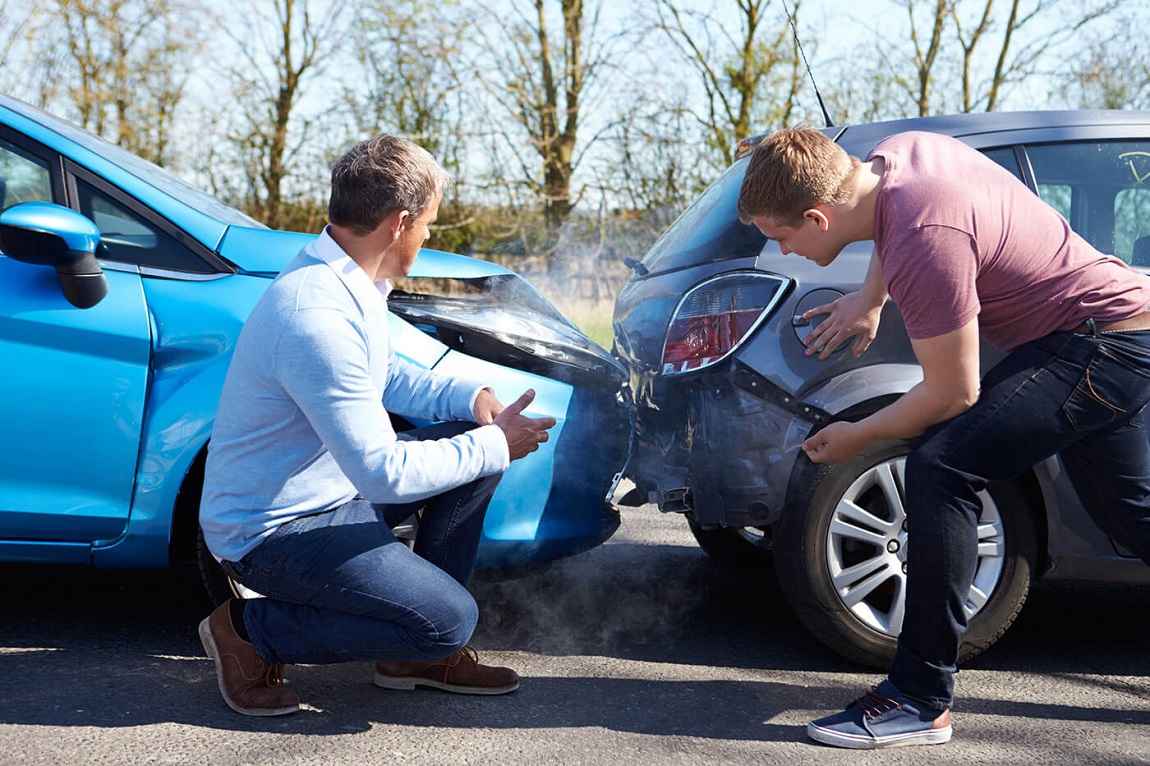It’s easy to think of much more enjoyable ways to spend your money than paying for car insurance, but insurance is arguably one of those essentials we need to protect us financially when things go sour. Apart from accidents, there are other scenarios in which your car can get damaged or even stolen.
In most states, people who own cars are legally required to buy at least liability coverage. But, since many rely solely on their vehicles to get around, having full car insurance that includes collision and comprehensive cover may be necessary.

Image Credits: experian
Full coverage auto insurance can save you from the massive inconvenience of being without your car if you don’t have the money to fix or replace it if it’s damaged. People without auto insurance may have to drain their savings or go into debt to repair or replace their car, and it may take years to rebuild their savings or pay off the debt.
Collision and Comprehensive car insurance each protect your vehicle against damage, but they are considered add-ons since you can’t buy them independently. If you’d like to purchase Collision, Comprehensive, or both, you would need to buy liability coverage. Many insurance companies offer all three as a package deal.
Contents
Collision vs. Comprehensive Insurance
To get the most protection, it’s a good idea to have full coverage so that you’re covered for almost all situations in which your car can be damaged. Collision and comprehensive insurance will pay for the costs to fix or replace your vehicle, but they will not pay to fix the cars or property of others if the crash was your fault. They will also not pay any medical bills for injuries sustained in an accident.
The difference between Collision and Comprehensive coverage boils down to how your vehicle was damaged.
Collision Insurance:
While collision coverage is optional, your lender may require you to have it if you’ve purchased your car using a loan. You may also be required to have collision insurance if your vehicle is leased.
Collision insurance will pay for the costs of fixing your car if you’ve been involved in an accident or crashed into a stationary object. The insurance company will usually pay regardless of who caused the accident. Common examples of what collision insurance will pay for include the following:
- You crash your car into another car
- Someone knocks into your vehicle and drives away
- Your hit a pothole which damages your vehicle
- Your vehicle rolls over
- You crash your car into a stationary object like a wall, fence, or tree
Often, collision insurance has a deductible. If your car is damaged, you must pay the out-of-pocket deductible before the insurance company pays to repair your vehicle.
In most cases, there is a limit to how much your car is covered. This limit is the maximum amount the insurance company will pay to repair your vehicle. Usually, the collision limit is the cash value of your car minus the depreciation.
It’s important to remember that since cars depreciate, the depreciated value is typically less than what it would cost to replace your vehicle with a new make and model. Cars usually depreciate at a rate of 15% – 20% a year and lose the most value within the first year.
For example, imagine you purchased a brand-new car for $20 000. Two years later, you totaled it in an accident. If you have collision coverage, the insurance provider will pay for the value of the car minus your deductible.
We can roughly estimate that depreciation over two years is 35%, bringing the car’s value to around $13 000. If your deductible were $500, your insurance company would pay you $12 500, so to replace your car with a make and model similar to the one you crashed, you will probably have to contribute some of your own money.
Comprehensive Insurance:
Comprehensive insurance will cover almost all damage to your car that’s not caused by a crash. Like Collision insurance, if your car is bought using a loan or leased, the lender may stipulate that you need Comprehensive cover.
Most Comprehensive policies may cover the following:
- Damage caused by an object falling onto your car, like a tree branch
- Natural disasters like a flood, an earthquake, or a fire
- Acts of vandalism or theft
- Damage caused by hitting an animal
- Cracked, shattered, or broken windshields or windows
Comprehensive insurance also has a deductible amount and a limit to how much the insurance provider will pay to replace or fix your car. The deductible and limit for Comprehensive cover are usually separate from your Collision cover, so it’s essential to keep this in mind.
How to Get the Best Full Coverage Auto Insurance Premium
Car insurance may be expensive, but since it’s one of those things you must have, it’s a good idea to get the best possible premium.
A question drivers might have is, does owning your car lower insurance? This question is understandable as most people would like to save on insurance costs where they can, but the premium you pay for insurance remains the same whether your car is paid off or financed.
To calculate the cost of your premium, insurance companies usually take the following into account:
- The make and model of the vehicle
- Whether the vehicle is to be used for business or private purposes
- Your age and gender (young people who don’t have a lot of driving experience are considered riskier)
- The area you live in
- Any previous claims
If you’re looking to reduce your auto insurance costs or find the best option, consider the following:
- Shop around and compare quotes:
The insurance industry is quite competitive, with many companies offering insurance packages at different prices. It may be time-consuming, but it’s worth getting quotes from different companies and analyzing them to help you find one that fits your needs and budget.
- Find out the cost of insurance before buying a car:
Before buying a car, it’s a good idea to determine how much the insurance will be on that car. A part of the insurance premium is based on how much a car parts cost, how much it costs to fix a car, and how risky owning a particular vehicle is, as some cars have a higher theft rate than others.
Because of this, it makes sense to find out beforehand if you can afford the insurance premiums of a car you’re keen on buying. If the premiums are out of your budget, it’s best to look for another vehicle that’s cheaper to insure.
- Improve your credit score:
Insurance companies typically review your credit history and may offer you a price calculated by considering your credit rating. People with a high credit rating usually make fewer claims than those with bad credit, so they are given a lower premium based on this.
Increase your credit rating by paying your bills timeously, managing your debt, and only taking out loans when it’s necessary and when you’re confident you can repay them within their terms
- Don’t let your policy lapse:
People who allow their insurance to lapse are seen as irresponsible, so when they want to buy insurance, they are typically given a higher premium. Even if you are going through financial difficulty, try not to let your insurance policy lapse, as it will cost you more in the long run.
- Buy several types of insurance or policies from the same company:
Most people buy multiple types of insurance, like homeowners, renters, and car insurance. Some insurance providers may offer you a discount if you have two or more policies with them. Also, if you have more than one car and insure it with the same insurance company, you may be given a discount.
Still, it’s worth shopping around and comparing what it would cost to have all your policies with one insurance firm or with different companies, as prices can vary.
- Discounts based on a good track record:
If you’ve been with the same insurance provider for a few years and have not claimed, you may be eligible for a discount. Some insurance companies may reward policyholders who have a good track record with a reduced premium.
- Take a safe driving or accident prevention course:
Even if you’re not a new driver, there is always room to improve your driving skills, and some insurance companies may reward you for it by giving you a lower premium. Taking a safe driving or accident prevention course improves your skills, reducing your chances of being in a crash, and in turn, you are less of a risk to insurance companies.
- Increase your deductible:
While increasing your deductible is one way to reduce your monthly premiums, you must think carefully before choosing this option. Even though you will save on monthly premiums, having a high deductible means you will have to pay more out-of-pocket to fix or replace your car if it’s damaged or stolen. Before agreeing on an increased deductible to lower your monthly premiums, consider how you will pay the deductible should you need to put in a claim. You should only raise your deductible if you have easy access to the amount you would need for the deductible.
Do You Need to Buy Both Collision and Comprehensive Cover?
Collision and Comprehensive insurance are optional unless your car is bought using a loan or is leased. Full coverage offers maximum protection against almost all kinds of damage to your vehicle. If your car is damaged, you will only need to pay the deductible to repair it, and your insurance company will pay the balance up to the insured limit.
Still, if you’re unsure whether to purchase full coverage or just the minimum liability, consider the factors below that should help you decide.
The Value of Your Car:
It makes sense to buy full coverage insurance if you own an expensive luxury car or just purchased a brand-new vehicle. Expensive cars typically cost more to fix, and if your car is brand new, while it may depreciate the most in its first year, it is still worth more than an old car.
On the other hand, if your car is old and cheap, it may not be worth full coverage, depending on the vehicle’s value. Work out the cost of collision and comprehensive and consider your deductible. In some cases, it may add up to more than the car’s value.
For example, you own an old car worth R1500, and full coverage insurance costs you $1000 for the year. If your deductible is $600, it’s probably not worth buying full cover since the premiums and deductible you have to pay to repair your car are greater than its value. In this case, it may be a better option only to have liability and put the money you would save into a high-interest savings account. This way, if you need to repair the car, you will have at least some of the money in savings.
How Often You Use Your Car:
Usually, the more often you use your case, the higher the chances are that you will be involved in an accident, so it’s helpful to consider this when deciding whether to buy full coverage insurance.
If you work from home and only use your car occasionally to drive a short distance, you can probably get away with only having liability and comprehensive since you’re less likely to be in a crash.
Another possibility is that you have two vehicles – one that you use regularly and drive long distances at a time, and the other you use rarely. In this case, the car you use often should be fully insured, while the second vehicle may only require liability and comprehensive.
See Also: Otto Insurance Review
Conclusion
Both Collision and Comprehensive car insurance protect your car and will pay to repair or replace it should it be damaged or stolen; The difference has to do with how it was damaged. Collision covers damages caused by a crash, whereas Comprehensive covers almost all other damages and theft.
Post You May Like:
- Automation Can Be Used At A Life Insurance Company
- Affordable Pet Insurance Companies
- How Much Does Truck Insurance Cost?


